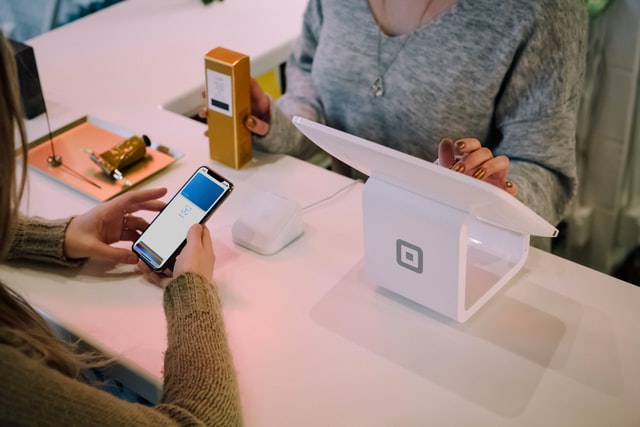9 Ways to Increase eCommerce Store Conversion

Your conversion rate dictates how well your eCommerce site is doing to captivate your audience and urge them to make a purchase. Despite how much detail and funds go to acquiring customers and leading traffic into their websites, many eCommerce stores are complacent when it comes to their conversion rate!
Most eCommerce stores hover around a 2%-3% conversion rate, but your goal isn’t like the rest. Your goal should be finding ways to work around the average and lead at the top.
If you want to increase your eCommerce site’s conversion rate, you came to the right place. Here are nine ways in which you can be better than the average without having to spend a fortune!
Why Do Conversion Rates Matter?
Before we jump into how you can increase your eCommerce site’s conversion rate, let’s understand why conversion rates matter in the first place. Increasing your conversion rate is beneficial for two reasons:
Value
Revenue
If your conversion rate is high, this means that your site has more value. Through reassurance and persuasive content, you can increase the value of the products as well. It also means that you consider user experience, which increases your appeal to the general public.
Optimizing your conversion rate is also a reliable way of gaining revenue. Compared to paying thousands of dollars on advertising and marketing, increasing your conversion rate is a lot more cost-efficient!
The 9 Ways of Increasing Your Conversion Rates
Utilizing Persuasive Design
Making your website look appealing should be a priority if you want people to make purchases. If your site is unable to keep people interested and isn’t subtly leading them to complete transactions, that’s going to be a big problem.
Being visually appealing and persuasive is the goal of any site’s design, eCommerce or not. Modern consumers aren’t going to be staying long if they see that your site is bland and lacking content that can attract them.
The homepage is the backbone of your website. If the homepage isn’t visually appealing for the customers, there’s only less than a 30% chance that they’ll continue scrolling through your website. Make your homepage have a main image with inlaid text, and add a call to action at the bottom to drive things home!
Keep your design consistently persuasive and attractive—that’s the first step to increasing your conversion rate!
Make Navigation Seamless
If you step into a store and see a disorganized sea of products, you’re probably not going to have a good time. This fact is the same for eCommerce stores.
If you don’t make sure that navigation is as seamless as possible, they will look for an eCommerce store that will. Having a navigation bar is essential, but categorizing products based on their usage or type will save a lot of your customer’s time!
Personalized Content
Providing dynamic and personalized content is a must nowadays if you own an eCommerce website. Ensuring that the suggested items become tailored to the taste of the person behind the screen is a crucial way to increase your conversion rates!
If you get something suggested to you based on your search pattern on the eCommerce site or based on your purchase history, you’re going to be more inclined to buy it. Getting an algorithm set up to provide personalized suggestions will lead to you getting more sales, which will boost your conversion rate!
Selling Through Social Media
Marketing and advertising your products on social media is one thing—selling it directly to users through them is another. Selling items through social media works best if your products fall under the type of content circulating through social media!
If your eCommerce store focuses on fashion, make-up, or anything heavy on visual presentation—you can capitalize on Instagram and make your profile shoppable!
Being Informative
Buying things online is already a gamble that your customers are taking—shopping blind is another. Making your products feel like a gamble when they’re getting purchased is a one-way ticket to a decrease in conversion rates!
Your products should always have descriptive and informative product descriptions so that your customers are comfortable fully knowing what they’re going to receive!
Using Social Proof & Reviews
Getting social proof such as expert testimonials or even getting deals with social media personalities and celebrities through sponsorships makes your products look more trustworthy. Compiling all the fantastic reputation you’ve garnered through the years will make people feel more comfortable buying your products and using your site.
Adding product reviews and urging people to leave one is also a great way of making people see your product as trustworthy. Positive reviews can leave a huge mark that can push people into getting your products!
Discounts Are Your Best Friend!
Discounts push people into buying products through the narrative of saving money. However, a way in which you can capitalize on discounts even further is by providing multiple discount options that your customers can choose from!
Giving your customers the control of when and where they can use coupons and discounts makes the experience more personalized.
Using the Shopping Cart to its Fullest!
Making your customers continue from where they left off even when they’re on a different device is crucial to making the shopping experience more comfortable. Over 33% of people have two or more devices to shop on an eCommerce site—adding a persistent shopping cart makes switching from device to device seamless.
Adding a time limit for how long each item will stay on their shopping carts also gives a sense of urgency that helps increase the chances of buying the items on their carts!
Adding Different Delivery & Payment Options
There are tons of different ways in which your customers can make transactions. Catering to all of them will only end up burning out your resources on unnecessary effort. Instead, you should check which payment methods your consumers commonly use!
For delivery options, your customers should have control over which service handles their package or how much they’re willing to spend. Add a fast delivery option that gets the parcel to them as quickly as possible at the cost of being more expensive and a standard delivery option that is cheaper if they’re willing to wait.

